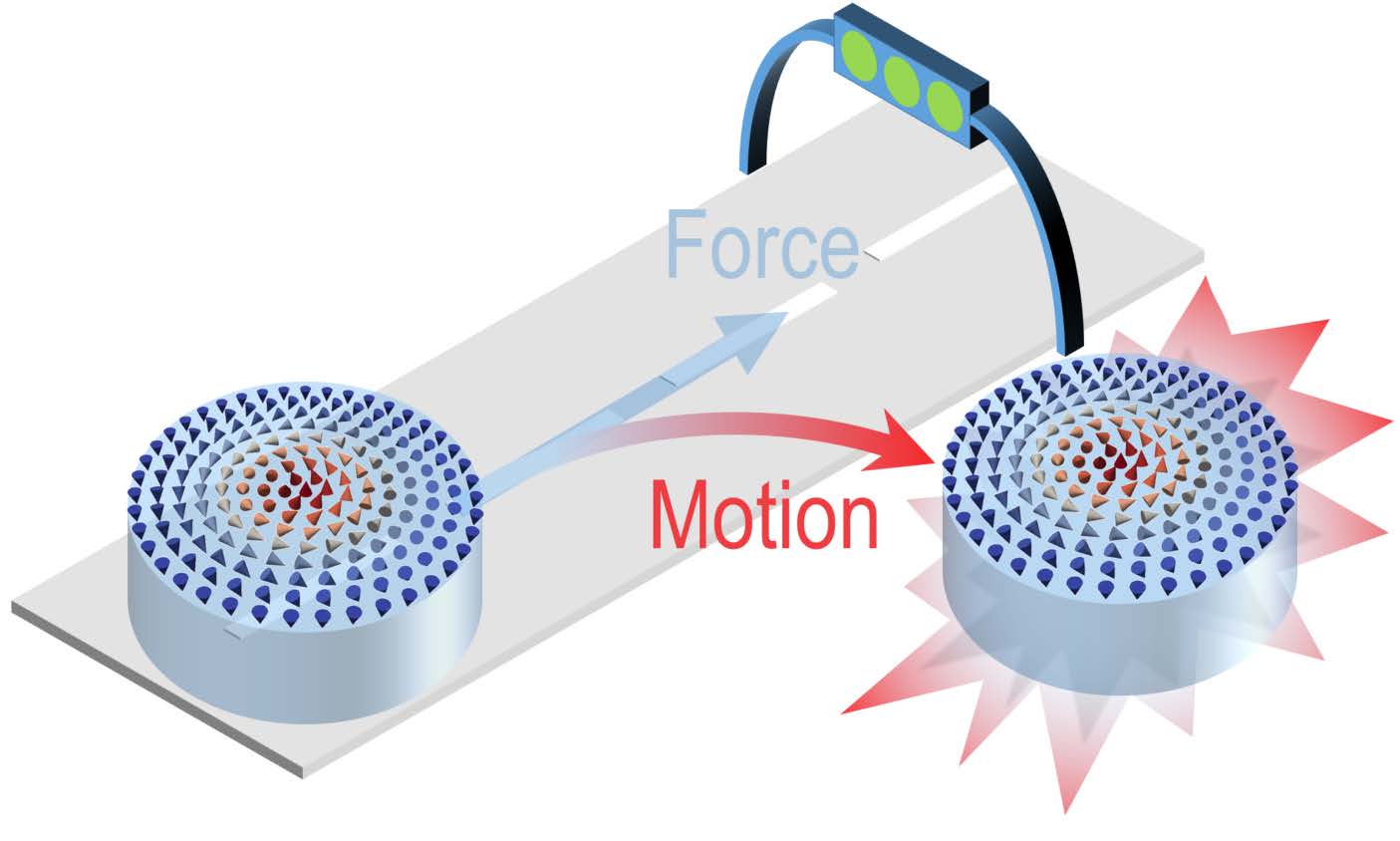Skyrmions spinning off the track!

Many possible spintronic applications of skyrmions involve their motion along pre-determined race tracks. Skyrmions can be moved with much lower energy than ferromagnetic domain walls, but there is a problem. Among the many unusual properties of skyrmions is the tendency of their direction of motion to deviate from that of a driving force; the angle by which they diverge is known as the skyrmion Hall angle and is a result of the topology giving rise to a Magnus force in its equation of motion.

The red arrows indicate the magnitude and direction of the induced velocity as a function of distance from the current-carrying Oersted wire and the skyrmion Hall angle q. For all
finite skyrmion Hall angles, the velocity field induced by the field gradient shears the skyrmion lattice along its direction of motion. This shear leads to lattice reorientation and uniaxial peak broadening, indicated in the magnetic structure factors provided beneath their corresponding shear field cartoons. As the direction of the applied force is known, and the direction of the induced motion can be inferred from the structure factor, the skyrmion Hall angle can be acquired by measuring the angle between these two vectors. Unfortunately, our measurements have shown that FeGe has a skyrmion Hall angle of 55 degrees!
The description of the technique and the determination of the Skyrmion Hall angle was recently published in the high impact journal Nature communications.
The team demonstrated this procedure to yield a quantitative measurement of the skyrmion Hall angle in the room-temperature skyrmion system FeGe, shearing the skyrmion lattice with the magnetic field gradient generated by a single turn Oersted wire. Further studies of Skyrmion Hall angle measurement using neutron diffraction are part of an MPhys Level 4 research project being offered in 2021-2022.



/prod01/prodbucket01/media/durham-university/departments-/physics/teaching-labs/VT2A9034-1998X733.jpeg)